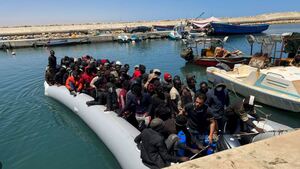The calamity, unfolding over the past week, has left approximately 1 200 families without shelter, striking hardest in districts such as Mangochi, Salima, Nkhotakota, Chikwawa, and Nsanje.
The National Water Resources Authority (NWRA) is deeply troubled by the rapid rise in water levels, a phenomenon not observed before, prompting urgent advisories against construction within the lake's buffer zones.
On-site disaster management officials are tirelessly working to provide relief to the affected populace, but the situation remains dire as the number of displaced individuals climbs, and concerns mount over the potential spread of waterborne diseases.
Experts attribute the swelling of Lake Malawi to consistent patterns of higher-than-average rainfall in recent years.
Projections suggest that the lake's water level may remain elevated beyond the previous hydrological year's measurements.
In response, the NWRA has issued stern warnings to developers, urging them to halt all construction activities near the vulnerable lake buffer zones, to prevent further disaster and loss.
--George Mhango/ChannelAfrica--












